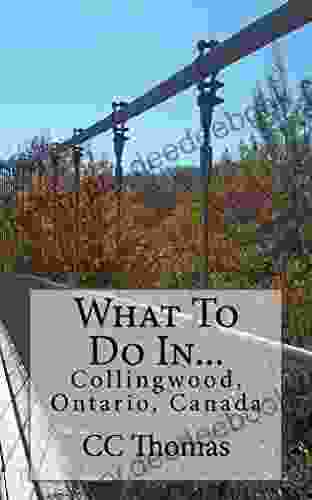Unveiling the Perilous Dance of Earthquakes, Plate Tectonics, and Earthquake Hazards

The Earth's Restless Surface
The surface of our planet is not a static, unchanging landscape. Instead, it is a dynamic and restless environment, constantly shifting and evolving under the influence of powerful forces deep within the Earth.
5 out of 5
| Language | : | English |
| File size | : | 5048 KB |
| Text-to-Speech | : | Enabled |
| Word Wise | : | Enabled |
| Print length | : | 169 pages |
At the core of this constant change lies the process known as plate tectonics. The Earth's outermost layer, known as the lithosphere, is divided into a patchwork of tectonic plates that fit together like pieces of a puzzle.
These plates are in constant motion, interacting with each other in a complex ballet of convergence, divergence, and subduction. It is at these plate boundaries that the seeds of earthquakes are sown.
The Birth of Earthquakes
Earthquakes are the result of the sudden release of energy within the Earth's crust. This energy is stored in the form of strain, which builds up as tectonic plates move past each other.
When the strain becomes too great, the rocks along the plate boundaries can no longer withstand the pressure and they rupture, sending seismic waves rippling through the Earth's crust.
The point where the rupture begins is known as the earthquake's focus, while the point directly above the focus on the Earth's surface is known as the epicenter.
Earthquakes can range in size from barely perceptible tremors to cataclysmic events that can shake entire cities to the ground. The magnitude of an earthquake is measured using the Richter scale, which ranges from 1 to 10.
While earthquakes can occur anywhere on Earth, they are most common along plate boundaries, particularly in areas where plates are colliding or subducting beneath each other.
The Devastating Consequences
Earthquakes can have devastating consequences, claiming lives, destroying infrastructure, and causing widespread economic hardship.
The shaking caused by an earthquake can directly damage buildings, bridges, and other structures. The collapse of these structures can trap people inside, leading to injuries and fatalities.
Earthquakes can also trigger landslides, avalanches, and tsunamis, which can further compound the devastation.
The economic impact of earthquakes can be significant, particularly in areas with high population densities and developed infrastructure.
The loss of lives, property damage, and disruption of economic activity can cost billions of dollars and take years to recover from.
Assessing the Risks
Given the potential for earthquakes to cause such widespread destruction, it is essential to assess the risks and take steps to mitigate their impact.
Earthquake hazard assessment involves studying the past history of earthquakes in a particular area, as well as the geology and tectonics of the region.
This information can be used to create maps that identify areas with different levels of earthquake risk.
Earthquake risk assessment is an important tool for land use planning and development decisions. It can help to ensure that critical infrastructure, such as hospitals and schools, are located in areas with low earthquake risk.
Earthquake Preparedness and Mitigation
In addition to assessing earthquake risks, it is also important to take steps to prepare for and mitigate the impact of earthquakes.
Earthquake preparedness involves educating the public about earthquake hazards and how to stay safe during an earthquake.
This includes teaching people how to drop, cover, and hold on, as well as how to conduct earthquake drills.
Earthquake mitigation involves taking steps to reduce the damage caused by earthquakes. This can include retrofitting buildings to make them more earthquake-resistant and developing early warning systems.
By taking steps to prepare for and mitigate earthquakes, we can reduce the risk of injuries, fatalities, and economic losses.
Earthquakes are a powerful reminder of the dynamic and often unforgiving nature of our planet.
By understanding the science behind earthquakes, assessing the risks, and taking steps to prepare for and mitigate their impact, we can reduce the devastating consequences of these Earth-shaking events.
Image Captions
Image 1: A diagram of the Earth's tectonic plates.
Image 2: A seismograph recording the seismic waves from an earthquake.
Image 3: A collapsed building after an earthquake.
Image 4: A sign indicating an earthquake hazard zone.
Image 5: People practicing the drop, cover, and hold on earthquake drill.
5 out of 5
| Language | : | English |
| File size | : | 5048 KB |
| Text-to-Speech | : | Enabled |
| Word Wise | : | Enabled |
| Print length | : | 169 pages |
Do you want to contribute by writing guest posts on this blog?
Please contact us and send us a resume of previous articles that you have written.
 Page
Page Genre
Genre Library
Library Paperback
Paperback Magazine
Magazine Newspaper
Newspaper Shelf
Shelf Bibliography
Bibliography Foreword
Foreword Synopsis
Synopsis Annotation
Annotation Footnote
Footnote Manuscript
Manuscript Tome
Tome Bestseller
Bestseller Classics
Classics Library card
Library card Biography
Biography Reference
Reference Encyclopedia
Encyclopedia Dictionary
Dictionary Thesaurus
Thesaurus Character
Character Resolution
Resolution Librarian
Librarian Catalog
Catalog Card Catalog
Card Catalog Borrowing
Borrowing Archives
Archives Periodicals
Periodicals Lending
Lending Academic
Academic Journals
Journals Rare Books
Rare Books Interlibrary
Interlibrary Literacy
Literacy Thesis
Thesis Book Club
Book Club Theory
Theory Textbooks
Textbooks Alan Householder
Alan Householder C S Fuqua
C S Fuqua Hiromi Uehara
Hiromi Uehara Joe Pass
Joe Pass Ieva Ozolina
Ieva Ozolina Beverly Lewis
Beverly Lewis Benjamin Netanyahu
Benjamin Netanyahu Todd Huizinga
Todd Huizinga Tudor Jones
Tudor Jones Christine Lynn Herman
Christine Lynn Herman Christopher Loft
Christopher Loft Wesley K Clark
Wesley K Clark Clarence Hawkes
Clarence Hawkes Mischa Titiev
Mischa Titiev Shannon Mcclintock Miller
Shannon Mcclintock Miller Swifty Kidder
Swifty Kidder Annabelle Thorpe
Annabelle Thorpe Jerry A Mccoy
Jerry A Mccoy Marilyn Price Mitchell
Marilyn Price Mitchell Wayne Lemmons
Wayne Lemmons
Light bulbAdvertise smarter! Our strategic ad space ensures maximum exposure. Reserve your spot today!

 Edison MitchellEva of the Farm: The Inspiring Story of Dia Calhoun and Her Sustainable...
Edison MitchellEva of the Farm: The Inspiring Story of Dia Calhoun and Her Sustainable... Cruz SimmonsFollow ·6k
Cruz SimmonsFollow ·6k Colby CoxFollow ·6k
Colby CoxFollow ·6k Leo TolstoyFollow ·3.1k
Leo TolstoyFollow ·3.1k Bobby HowardFollow ·13.3k
Bobby HowardFollow ·13.3k Jermaine PowellFollow ·2.7k
Jermaine PowellFollow ·2.7k Jim CoxFollow ·18.9k
Jim CoxFollow ·18.9k John GreenFollow ·19.6k
John GreenFollow ·19.6k Eugene ScottFollow ·7.1k
Eugene ScottFollow ·7.1k

 Bo Cox
Bo CoxDiscover the Enchanting Allure of Collingwood, Ontario,...
Nestled amidst the breathtaking landscape of...

 Ralph Ellison
Ralph EllisonThe Street of Clocks Poems: A Poetic Journey Through Time
Welcome to The Street...

 Dwight Blair
Dwight BlairCritical Political Economy of the Middle East and North...
The Middle East and...

 Deion Simmons
Deion SimmonsPerfect Strategies For Painting Amazing Marine Creatures...
Gouache is a...

 Hugh Bell
Hugh BellThe American Republic: Constitution, Tendencies, and...
The American Republic,...
5 out of 5
| Language | : | English |
| File size | : | 5048 KB |
| Text-to-Speech | : | Enabled |
| Word Wise | : | Enabled |
| Print length | : | 169 pages |












